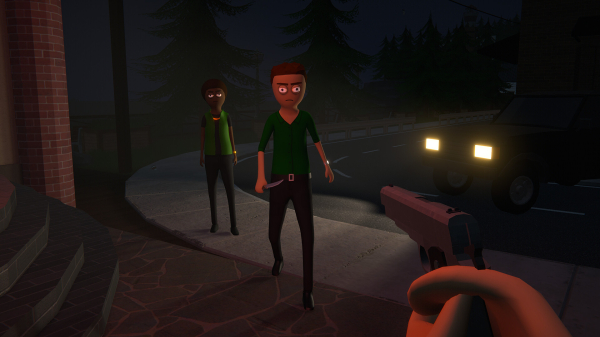Schedule I review
I first stumbled upon Schedule I when I was looking for a fresh narrative experience in the gaming world. As a longtime enthusiast always on the hunt for titles that challenge standard conventions, I was instantly intrigued by the promises of immersive gameplay and innovative storytelling. The name itself – Schedule I – offered a hint of complexity and controversy, urging me to give the experience my full attention. From the very first moments, I felt compelled to press on, eager to see if the game would live up to its enigmatic title.
The Unorthodox Narrative Approach
One aspect that struck me immediately was the narrative structure of Schedule I. Unlike other games that follow a more traditional, linear approach, this title presented me with a labyrinthine storyline that lured me into a world where decisions had far-reaching consequences. Throughout my gameplay, I found myself making choices that affected not only the unfolding of the tale but also the environment around me. It was as if the game encouraged me to become deeply entwined with a living narrative, one that was flexible, unpredictable, and refreshingly real. Every twist and turn in the storyline felt organic rather than scripted, and my personal input made each session feel unique and engaging.
The Layered World-Building Experience
As I navigated the intricate levels of Schedule I, I couldn't help but admire the depth of its world-building. The designers had clearly invested a great deal of thought into developing environments that felt both authentic and otherworldly. The settings ranged from stark urban backdrops to eerie, almost surreal landscapes that challenged the boundaries of reality. I spent hours exploring hidden corners, each revealing layers of lore and history that enriched my understanding of the game’s universe. This architectural diversity allowed me to lose myself in the game’s atmosphere, each region telling a story of its own and inviting me to uncover secrets tucked away in every shadow.
The Intricate Mechanics and Interactive Gameplay
In Schedule I, the gameplay mechanics were meticulously crafted to provide an experience where strategy and spontaneity merged seamlessly. I particularly appreciated how the controls felt intuitive yet demanding, striking a balance that continuously challenged my reflexes and problem-solving abilities. The integration of environmental puzzles and skill-based challenges required me to think on my feet and adapt rapidly to new situations. The dynamic interaction between the protagonist and the game world made every encounter a fresh puzzle, forcing me to not only perfect my technique but also to strategize each move carefully. This harmonious blend of deliberate tactics and spontaneous reactions made each session genuinely immersive and rewarding.
The Artistry Behind the Visuals
Schedule I is a testament to what can be achieved when art and technology converge. The aesthetics are breathtaking, with intricate design details that speak volumes of the creative vision behind the game. Every frame presented a canvas of vibrant colors and meticulously rendered scenes, each chosen to evoke specific moods and emotions. I found myself pausing to appreciate the minute artistic touches—the play of light and shadow, the subtle textures in the environments, and the lifelike animations. This exquisite visual style not only enhanced the narrative but also served as a dynamic backdrop that elevated the overall gaming experience, drawing me into a world that was both imaginative and deeply atmospheric.
The Immersive Soundscapes and Audio Design
Sound played a pivotal role in Schedule I, adding yet another layer to its immersive quality. The audio design was superb, complementing the visuals and narrative in a manner that heightened the intensity of every moment. I was particularly moved by the climactic musical scores that sometimes emerged unexpectedly during pivotal points in the game. The ambient sounds — from the subtle rustling of leaves to the distant hum of urban life — were designed to create a soundscape that felt both alive and participatory. This obsession with auditory detail ensured that I was not merely playing through the game, but living within its environments as every sensor in me was tuned to the rich tapestry of sounds around me.
Deeply Engaging Character Dynamics
Interacting with the characters in Schedule I was a journey of its own. The game’s protagonist, as well as the supporting cast, were imbued with distinct personalities and intricate backstories that made every conversation feel meaningful. I relished the moments when I could influence these characters through my dialogue choices, each threaded with its own set of risks and rewards. This personalized interaction fostered a deep connection between me and the people I encountered — or rather, the digital personalities that felt like tangible entities with hopes, dreams, and uncertainties. The gravity of my choices in shaping these relationships gave the game an emotional heft that I found to be both challenging and profoundly satisfying.
Adaptive and Responsive Game Mechanics
One of the aspects that impressed me the most about Schedule I was its commitment to creating an adaptive gameplay environment. The game continually adjusted its difficulty and pacing based on my performance. Every action I took was tracked and subtly influenced subsequent challenges, creating a feedback loop that kept the experience dynamic and refreshingly unpredictable. This responsiveness extended to the UI and control schemes, which evolved to better suit my style of play as I progressed. I appreciated how this system provided a continuous sense of development and growth, both for my character and my skills. At times, the game felt as if it was conversing with me, shifting its approach in real-time to ensure that I remained engaged and constantly learning.
Subtle Integration of Puzzles and Strategy
The brain-teasers embedded within Schedule I were both challenging and integral to the overall narrative. I spent many sessions deciphering intricate puzzles that were cleverly woven into the fabric of the game’s world. Unlike many titles that rely on overtly simplistic challenges, the puzzles here demanded a high level of concentration, creativity, and strategic thinking. Each puzzle, while appearing as a minor diversion at first glance, eventually revealed deeper insights about the world and the characters within. The interplay between puzzle-solving and action-oriented gameplay served to keep me on my toes, effectively blending moments of cerebral engagement with bursts of adrenaline and tactical confrontation.
Fluid Movement and Control Responsiveness
Schedule I distinguished itself with an emphasis on fluid movement and tight control mechanics. Spending long hours navigating its multifaceted levels, I was deeply impressed by how natural and responsive the character controls felt. Every jump, dash, and maneuver had a precision that allowed me to execute complex actions with a satisfying level of finesse. The game's commitment to minimizing input lag and enhancing responsiveness meant that even during moments of high tension, I never felt disconnected from the unfolding action. This synchronization between player input and game reaction was crucial for making daring escapes, intricate maneuvers, and quick adjustments during unforeseen challenges, thereby cementing a personal sense of mastery over the intricate control scheme.
Environmental Interactivity and Subtle Hints
The environments in Schedule I were engineered to be more than just static backgrounds; they were active participants in the story. I often found that elements of the game’s settings would interact with my actions in unexpected ways. Whether it was hidden passages activated by subtle environmental cues or objects that revealed secrets once approached, this level of interactivity demonstrated a thoughtful depth that kept me continuously curious. I spent countless hours scanning each scene, eager to uncover every detail that could alter my understanding of the game's panorama. This constant invitation to explore and engage made even the most routine passages of the game feel like a treasure hunt, one that rewarded attentiveness and creative exploration.
Personal Reflections on the Overall Experience
Reflecting on my time with Schedule I, I can say that the game has left a lasting impact on my view of what interactive storytelling can achieve. The melding of complex narrative choices, responsive controls, and immersive audiovisual design created an experience that was as emotionally compelling as it was technically impressive. Playing Schedule I forced me to examine my own decision-making processes, both in-game and in real life. I found the character interactions and branching storylines to be particularly resonant, as they mirrored the unpredictable and multifaceted nature of genuine human experiences. Every moment spent navigating its carefully constructed challenges felt personal and introspective, encouraging me to appreciate the art of gaming as a medium capable of mirroring the complexities of the world around us.
Explorations into Creative Ludwig-Style Soundscapes
An aspect of Schedule I that I hadn’t anticipated to be so profoundly influential was its creative use of soundscapes, which reminded me of the masterful compositions of classical influences. I spent many sessions in awe as the background scores morphed and evolved based on the intensity of the in-game narrative. There were times when the ambient soundtrack would mirror my emotional state perfectly, weaving in subtle motifs that resonated with the larger themes of the plot. The thoughtful integration of these musical elements turned every quiet moment into an evocative meditation, often prompting me to pause and reflect on the interplay between sound and story. This careful emphasis on audio storytelling elevated my overall immersion, making each encounter feel orchestrated and purposeful.
Innovative Interface and Seamless Accessibility
The user interface of Schedule I deserves a special mention for its innovation and ease of use. As someone who values functionality alongside aesthetics, I appreciated how the UI was designed to be both intuitive and rich in information. Menus were thoughtfully arranged to minimize distraction, allowing me to focus on the pivotal elements of the game while still having quick access to essential tools and inventories. Navigation through the game’s interfaces was smooth and natural, reinforcing the overall sense of immersion. The flexibility in customization meant that I could tailor the experience to suit my personal preferences, further enhancing my engagement with the game. This seamless integration of form and function highlighted the developers’ commitment to creating an experience that was not only visually captivating but also practically engaging on multiple levels.
How to Download and Play Schedule I on Different Platforms
Schedule I is a free game that you can download, install, and play on a variety of platforms. Whether you use a PC, console, or mobile device, this guide will show you the steps needed to get started.
Windows PC: Schedule I is available on Windows. You can download the game directly from the official website or a dedicated launcher. No extra emulators are needed.
Mac: Currently, Schedule I is not available for macOS systems. If you want to play on a Mac, consider using a cloud gaming service or an emulator.
Chromebook: There is no official version for Chromebooks. However, you may try cloud gaming options such as Xbox Cloud or NVIDIA GeForce Now if your device supports them.
PlayStation 5: Schedule I is fully supported on PlayStation 5. You can download it from the PlayStation Store without any extra requirements.
PlayStation 4: The game is also available on PlayStation 4. Visit the PlayStation Store to download and install the game.
PlayStation 3: Schedule I is not available on PlayStation 3.
Xbox One: Xbox One users can download Schedule I via the Microsoft Store, making it easy to install and play.
Xbox 360: The game is not available on Xbox 360.
Xbox Cloud: Schedule I is supported through Xbox Cloud Gaming. Please note that an active subscription such as Game Pass Ultimate may be required.
Nintendo Switch: The game is available on Nintendo Switch. You can download Schedule I directly from the Nintendo eShop.
Android: Schedule I can be played on Android devices. Download the game using the official app if it is available, or try an alternative store if needed.
iOS (iPhone/iPad): Schedule I is not available on the official App Store due to legal restrictions. You might try cloud gaming as a workaround to play on your iOS device.
How to Install: To install Schedule I, simply download the game from the official store for your device, such as the official website or a console store. For devices that do not have a native version, cloud gaming services are a good alternative.
System Requirements (for PC/Android): On a Windows PC, Schedule I requires at least an Intel Core i3 processor, 8 GB of RAM, and a DirectX 11-compatible GPU. For Android devices, the game requires a 64-bit operating system and support for the Vulkan API.
Cheats and Mods: Schedule I is a multiplayer game, and using cheats or mods is strictly prohibited. Attempting to modify the game can lead to permanent bans from online play.
Unblocked Version: Schedule I may not be available unblocked in school or work environments. If you need to play the game in such locations, using VPNs or cloud gaming platforms might be an option, though these methods could be restricted.

























Leave a comment
Your comment is awaiting moderation. We save your draft here
0 Comments